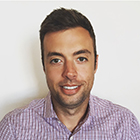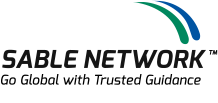Advancements & Achievements« Back to Advancements & Achievements Listings

How a South African swimming champ is unearthing a new pool of profits and opportunity for mid sized companies in the U.S.
By Rowan Philp
Warren Vickers, a former South African national swimmer, came to the US in pursuit of gold medals. Now, the financial services entrepreneur is seeking the gold standard in its alternative risk market, in a rapidly widening business lane that is unearthing significant new profits, employment and safety for mid-sized companies.
As a partner of CapSure – formerly NMS Captive Management – Vickers, 34, has co-designed an ethical, independently audited captive insurance model that allows ordinary mid-size companies to easily create their own licensed, regulated insurance entities – and profit from their own safer practices.
In addition, companies can avoid much of the huge proportion of insurance contract costs that flow to insurer pipelines for broker commissions (approx. 20%) and administrative costs (20 to 40%). Virtually all of the firm’s diverse set of clients have shown 15 to 20% average savings on premiums, and, in addition, often significant tax-exempt profits on reinsurance.
Vickers says that the extra savings and investment has boosted the employment and business agility options for those clients, while also improving their operational safety, and allowing them to take the business risks necessary to innovate.
“Owning their own insurance company incentivizes businesses to take a more active role in their risk management practices, as they directly benefit financially from improved policies and procedures,” he says.
Although the captive market has suffered negative publicity due to the abuses of a few small “micro captives,” many experts believe that the extra employment and safety generated by properly structured programs will lead to ever-increasing public support, a friendlier legislative environment, and a much-needed cash boost for mid-sized companies.
Indeed, legislation passed in December 2015 will boost the limit on premium revenue that captives can receive from $1.2 million to $2.2 million early next year, 2017. Meanwhile, awareness is growing among private company executives that the majority of Fortune 500 firms have their own captive entities, from Verizon to Sears, and that it is simply smart business.
And while the model offers tax advantages, recent research shows that the fundamental value motivation lies elsewhere, with surveyed companies listing key coverage gaps, the recapture of premiums, unique coverage for cyber risks; and access to reinsurance markets as the top four value adds they have enjoyed.
Vickers says many mid-size company CFOs have – for the first time – been able to insure against the unique risks of the new digital economy, including cyber threats, data breaches, and brand reputation risks. So companies are finding that they can use the new pool of insurance profits to invest in job-creating innovation, and can also take the necessary risks of pursuing those innovations because they are covered for new, unique digital threats by the same model.
He told SABLE: “With captives, you can customize coverage to fit the needs of your business. And on the good years, it offers the business a whole bunch of opportunities, whereby as the captive matures over time and accumulates underwriting profit and investment income from safe practices, the captive can loan money back to the business and use it to buy equipment; or they could distribute it out to shareholders – it provides the business an additional pool of capital.”
Like the technology-enabled fields of telematics and robo-advice within financial services, ethical captive insurance has graduated from the “too-good-to-be-true” phase and into one of the new win-win-win business models of the new economy (where the “third win” is improved safety).
And Vickers is set to join a generation of South African immigrants who have leveraged their fresh perspectives and work ethic to push win-win models in an American financial services sector where innovation has lagged. These go far beyond the famed examples of Elon Musk and Roelof Botha in their pioneering roles at PayPal.
Greg Smith – the former derivatives vice president who famously exposed a culture of contempt for customers on Wall Street, in his Op Ed “Why I am leaving Goldman Sachs” – now leads an award-winning start-up with a mission to lead a revolution in the giant 401k retirement market. His company, Blooom, found that an astonishing 83% of American retirement plans are wrongly invested, and has innovated a software tool that not only continuously optimizes retirement investments in line with customer profiles, but also automatically saves them an average of $100,000 in a lifetime of hidden fees.
Another, Jonathan Berk – professor of finance at Stanford, the world’s premier school of business – has authored the most influential textbook on financial economics ever published.
Now, CapSure – which is currently undergoing an exciting rebranding to reflect its national footprint – is reaching out to those companies that are positioned to benefit most dramatically from the model, including those in trucking and logistics, real estate, franchise companies and warranty providers.
“It is a growing niche area, and we’ve seen positive legislative changes from Congress," he says. “Our sweet spot is those companies with revenues between about 10 to $250 million, and we are looking to markets in New York and California. We’re looking at businesses paying premiums in excess of $500,000 annually with a low claims history; another big one is workers’ compensation, and we’re also looking to assist those who offer warranties with a more formalized vehicle to realize benefits.”
The success is based on a simple formula: in the “bad years,” companies effectively pay themselves claims for the small, high frequency losses up to a cap, and additional reinsurance covers catastrophic claims, and there is no difference from their previous experience as clients of commercial insurers. But in the “good years” of few claims, those companies can reinvest the tax-exempt dollars from underwriting profits and investment income, dollars that are ordinarily lost to their commercial carriers.
And in his previous role as a financial consultant for a leading Ohio accounting firm, NMS Inc, Vickers noticed that most years were, in fact, good years for many of their clients, in terms of risk – and yet commercial insurance companies were keeping those hundreds of thousands of dollars in premiums annually, and profiting from the companies’ safe behavior.
Worse: he noticed that the traditional insurance model offers a “negative incentive,” in which greater value flows from higher claims, while the captive model offers the positive incentive to be safer.
But a key value add that Vickers brings to the model is his deep experience in big data and data analytics; a field which is set to transform virtually all of insurance.
“I had worked in analytics in the medical area and with manufacturers, and my financial services background gave me insights into how money should be moved to maximize competitive advantage,” he says. “When I was working in data analytics, we drilled down for manufacturers, to see where they were losing money, and highlighted how they could recapture that money. It is almost the same with the captive business: we are drilling down to see where clients are losing out on value on their commercial coverage, and to show how they can retain that money for themselves.”
The principle behind the model is far more familiar than many may think – since warranties offered by a retailer are a form of captive insurance, many companies effectively self-insure without realizing it. More formally: captive insurance typically involves a licensed property and casualty insurance company formed with the help of a third party administrator to cover many of the risks of its parent company.
He told SABLE: “Looking at the information from our accounting practice: again and again, we noticed how businesses were paying their premiums every year while filing very few claims; their safety practices were sound, and the claims were often just sporadic. That is the best case scenario for insurance companies – they just get to collect premiums and almost never have to pay out."
“We looked at different areas where we could leverage value for clients within that space, and the research led us to a lot of Fortune 500 and 1000 companies that have their own captives. We studied the insurance law and the tax law, and we developed a model whereby you can do self-insurance in a more formalized way that is simple for the client, where business owners own their own insurance companies and manage their own risk. We use actuaries who are entirely independent to assess the risk and determine the capitalization amounts, coverage type and premium levels.”
After deep research – and given the regulatory scrutiny focused on offshore jurisdictions – Vickers and his partners chose the state of Delaware as the optimal jurisdiction for new captives.
“Delaware is very business-friendly and approachable, and has been very accommodating to us, in terms of enabling legislation and service," he says. “We were also aware that offshore jurisdictions get a lot of scrutiny. Not just anyone can set up a captive – you have to be a licensed firm in the state you’ll domicile the captive in, and you need experience. We were fortunate enough to do a lot of accounting work for various captive managers over a period of years.
“The beauty of this model is, on the good years, if you pay the same million dollars of commercial premiums into your captive, you’re often looking at getting maybe 5, 6, or $700,000 dollars back into the company, which is underwriting profit. There are obviously fees, but they are minimal in comparison to what businesses pay to their commercial insurers.”
Vickers is not critical of the commercial insurance market; he is simply energized, on behalf of clients, by the sheer scale of the opportunities within it. Everyone knows that the glitzy spires of casinos are graphic evidence of the gross “business value” imbalance of gambling for punters.
But – armed with the fresh perspective as an immigrant from South Africa – Vickers looked at the vast commercial insurance skyscrapers of New York, and wondered whether there might be a similar value imbalance in insurance. “You just have to take a stroll around Manhattan to appreciate how profitable insurance can be for virtually anyone,” he says.
Born in Durban, Vickers came to Cleveland State University on a swimming scholarship as an 18-year-old, having represented South Africa nationally. He would be made “Outstanding Swimmer of the Year” at Cleveland the next year, after shattering numerous records.
“I worked in financial services after finishing my economics degree, and, once I had the opportunity, I broke off on my own” he says. He says he gained key insights while working with NMS’ vastly experienced managing partners Shawn Neece and Brian Seifert, who would become his partners in the captive business.
NMS records show that, in a typical case – and assuming a 4% pretax rate on ROI, and an average claims loss of 5% of premium – a company that would otherwise pay $778,000 in premiums to a commercial insurer generated $263,000 in additional Retained Earnings utilizing a captive, with the same premium. And that this grows to $292,000 by year five of the captive, at which point Retained Earnings (with no dividends) rise to a total of $1,434,000.
Vickers says his primary challenge is neither regulatory nor competitive, but rather one of perception and education.
“Some people still just don’t realize that captives are fully licensed and regulated insurance companies,” he says. “And the problem with captives is that it is a bit of a broad term, so that the negatives of those abuses on the fringe can impact the image of a very sound model."
“Popular captive types include Pure or Single Parent captives used by many Fortune 1000 companies. Then there is a more hybrid program, which shares more enterprise-type risks, commonly referred to as 831b captives – where business owners look to keep their current insurance and use the captive to insure supplemental risk and gaps in coverage where they are under-insured or currently self-insuring.
“For example, a manufacturer might have a key supplier, and if something happened to that supplier at an inopportune time – that could adversely affect the business. Using a captive could ensure that the business has the financial protection in place in the event something would happen to that supplier, or a product that might be bad – the reputational risk.
“We like to focus more on the pure captives, and also touch on 831b models.”
He says CapSure uses multiple independent vendors for actuarial and audit reporting. “There is no bias; they are entirely independent from us. We make sure we do a thorough risk assessment on each prospective captive client. Our independent actuaries review insurance policies, loss history, and financials, amongst other important business data, to perform an in-depth feasibility study to determine if a business will benefit from a captive program.”
For Vickers, the question for companies in their target profile is no longer: Why would I switch to captive coverage? Or even Why not? Instead, it is increasingly: How soon can we have it running?
The answer, he says, is as soon as 90 days.

